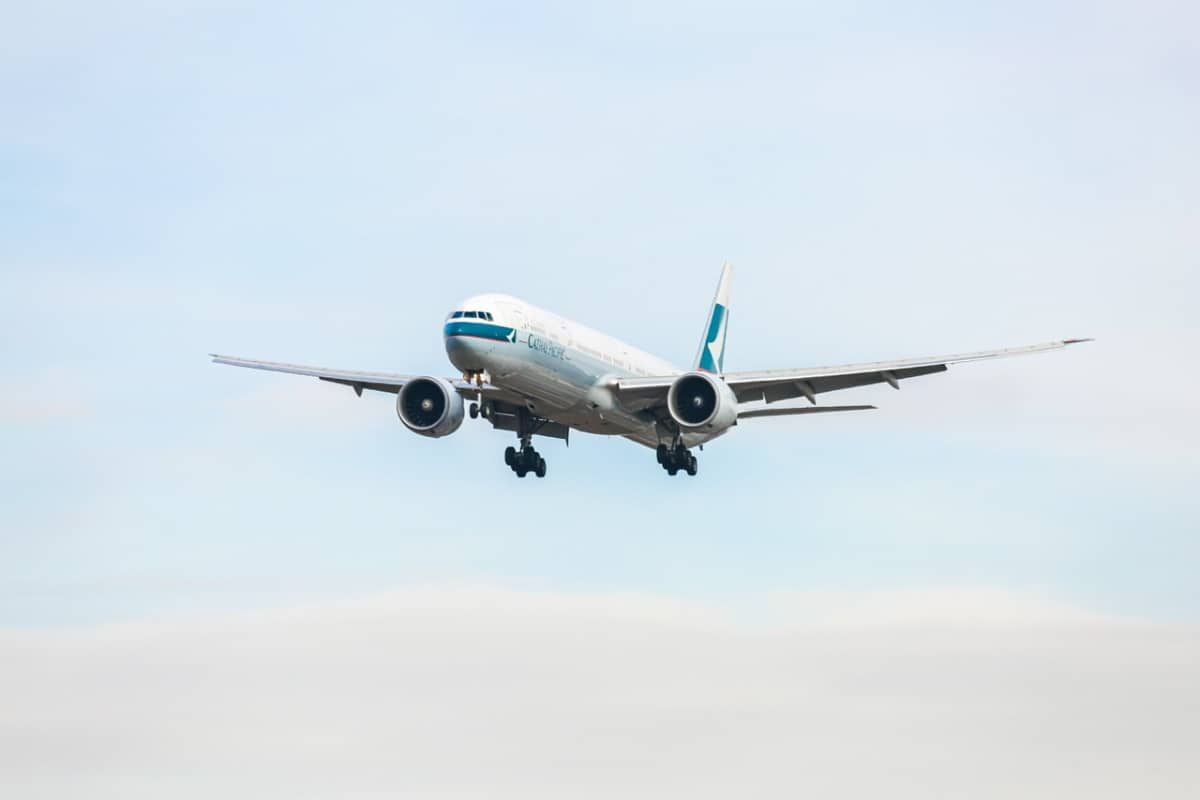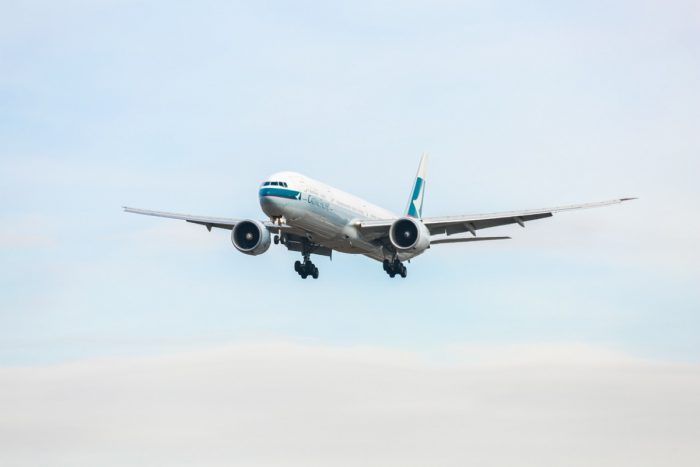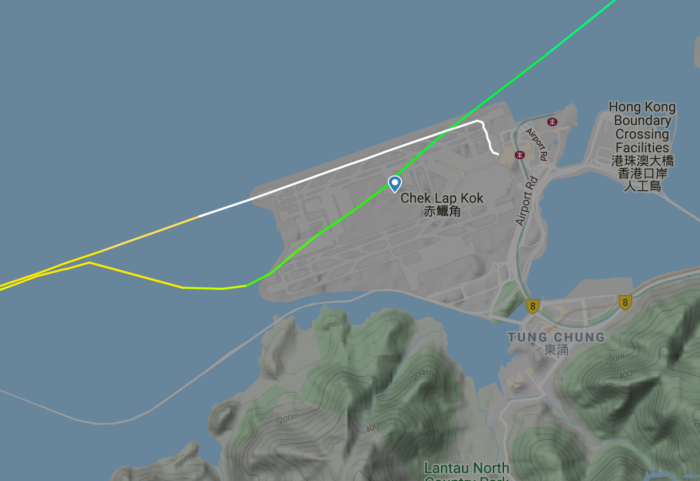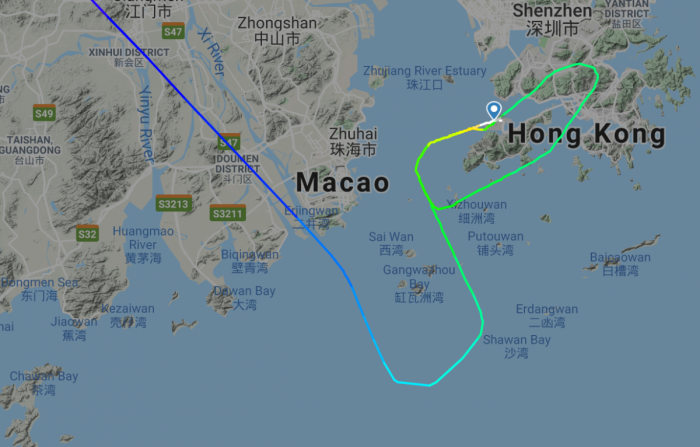**Update: 04/08/20 @ 12:00 UTC – Official statement received from the Hong Kong Civil Aviation Department. Included below.**
On March 31st, a Cathay Pacific Boeing 777-300 was landing flight CX252 at Hong Kong International Airport. The flight had departed London Heathrow the day before - March 30th. The aircraft was cleared to approach runway 07L but as it neared, it deviated, appearing to cross over to 07R. The recording of its flight path is quite interesting to look at...
Last-minute deviation
The Aviation Herald reports that a Cathay Pacific aircraft had clearance for the ILS approach to runway 07L and followed the localizer. However, as it made its descent through about 850 feet, the aircraft began to turn right, deviating off the extended runway centerline.
As it deviated off its approach to 07L, the aircraft then climbed on a heading of about 090 degrees (instead of 071 degrees) and crossed the runway threshold 07R at about 2,000 feet.
The aircraft then turned left onto a heading of about 059 degrees and climbed to 5,000 feet being subsequently instructed to climb to 6,000 feet. A go-around was performed and the aircraft made a second approach and subsequent successful landing on runway 07L, 20 minutes after the go-around.
What happened?
Upon query by ATC, the crew reported that the reason for their go-around was an "unstable approach", but what does this mean? According to IATA, a stabilized approach is defined as one where the following parameters are controlled within a specific range of values:
- Attitude
- Flightpath trajectory
- Airspeed
- Rate of descent
- Engine thrust
- Aircraft configuration
Therefore, an unstable (or unstabilized) approach occurs when at least one of these parameters is outside the required range.
In the case of flight CX252, the aircraft's trajectory had deviated outside what was acceptable - looking at the trace of the flight path, this is more than obvious. However, if we keep digging and ask about the reason for this unstable approach, the answer is not immediately clear.
If we were to interpret the aircraft's flight path, it appears that it was on track to land on runway 07L but deviates and approaches 07R as if attempting to make a snap decision to land there instead. Was pilot confusion or incorrect data input to blame? Or something else?
HKCAD statement
The statement received from the Hong Kong Civil Aviation Department is as follows:
"A Cathay Pacific Airways (CPA) flight (flight number: CX252) from London Heathrow commenced Instrument Landing System approach runway 07L at Hong Kong International Airport at 0702 (local time) on 31 March 2020 . When the flight was at about 1.5 nautical miles from touchdown, the pilot reported going around due to unstable approach. The Air Traffic Control (ATC) of the Civil Aviation Department (CAD) instructed the pilot to follow standard missed approach procedure. Shortly afterwards, the aircraft was seen deviating right towards runway 07R. The ATC immediately instructed the pilot to expedite its climb and turn left to resume the standard missed approach. The aircraft was vectored for another approach and landed runway 07L uneventfully.
According to the information gathered at the moment, the aircraft remained north of runway 07R centreline at all times. The projected track of the aircraft remained clear of the closest terrain in the vicinity and there was no risk of collision between the aircraft and any ground obstacle.
The CAD has serious concern of the occurrence. We have requested a report from CPA and are following up with the airline according to the established procedures."
Conclusion
Simple Flying has contacted Hong Kong's Civil Aviation Department (CAD), requesting a statement and hopefully some clarity on this issue. We've reported a number of incidents involving Hong Kong Airport in the last little while. This includes a FedEx 777 turning the wrong way after take-off, as well as a number of aircraft approaching and veering unexpectedly off the localizer, below safe altitude.
Could this recent CX252 incident also be related to particular guidance systems? It's certainly not our place to say so. Hopefully, we'll get some answers from Hong Kong's CAD soon.
Particularly to those who are trained pilots out there, do you think there could be any other explanation beyond human error for this incident? Let us know in the comments.




